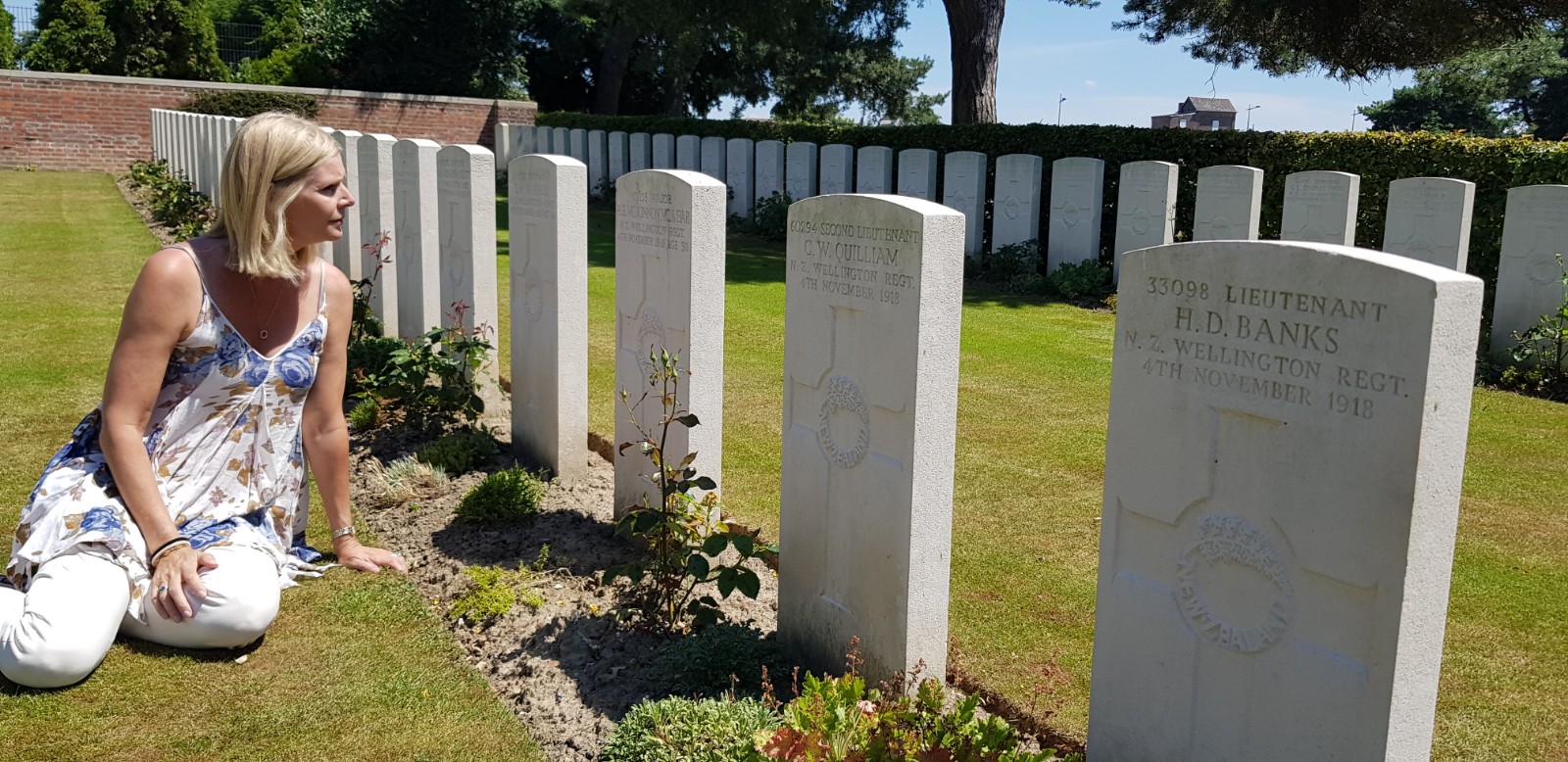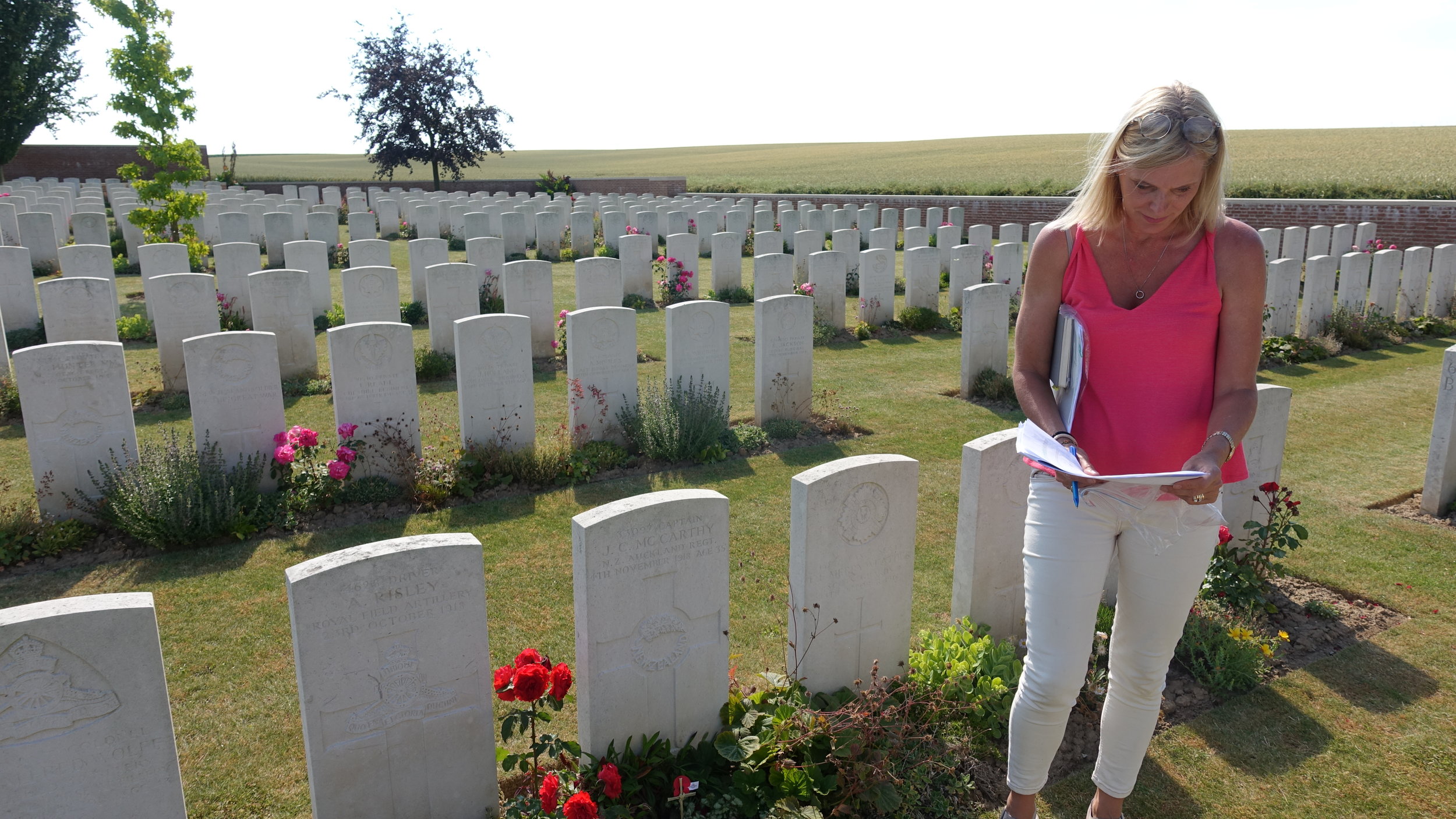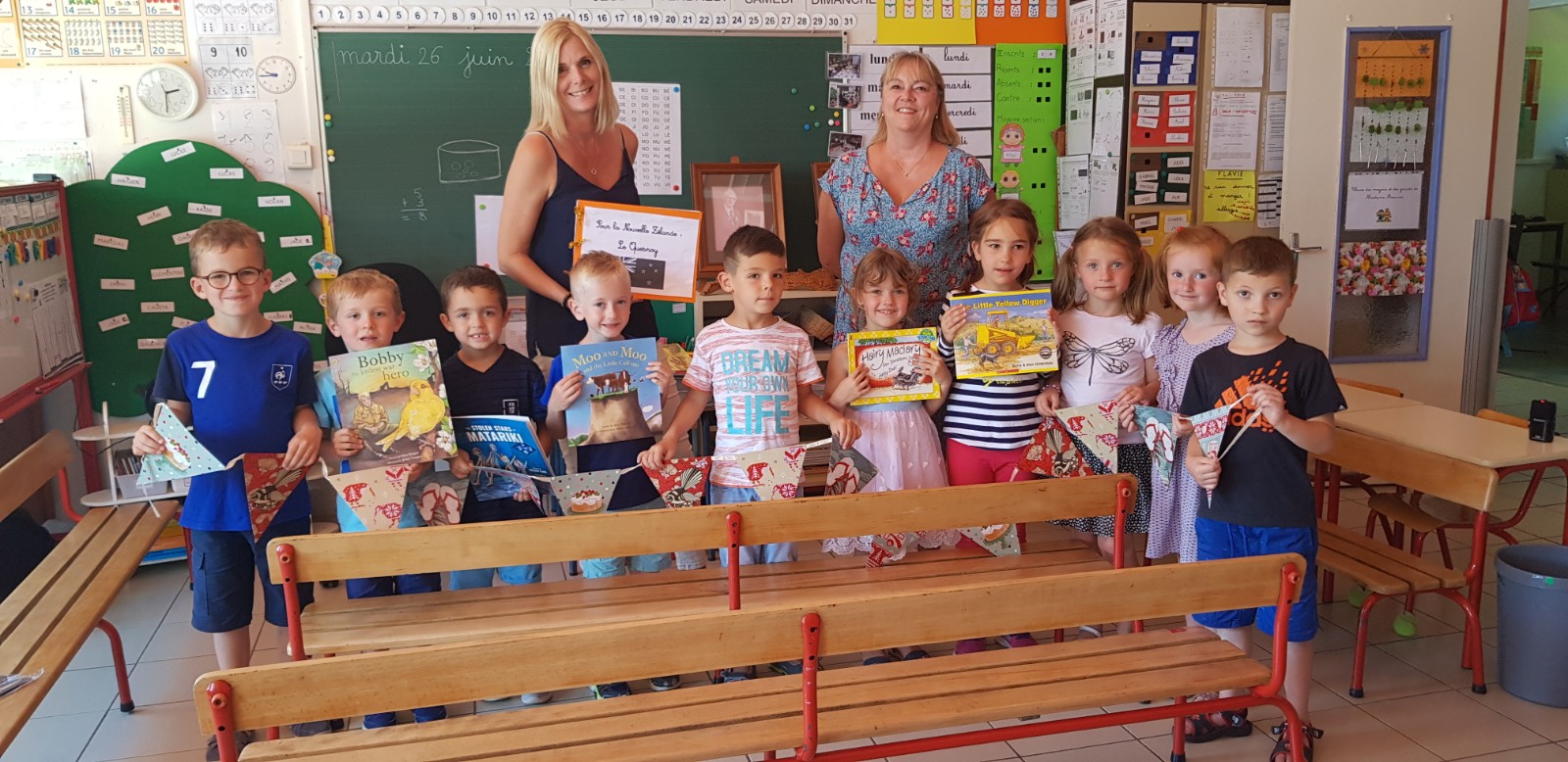The Liberation of Le Quesnoy
1 x 48 mins documentary (Maori TV, 2020)
6 x 10 min documentary web series, 5 x podcasts (NZ Herald, 2018)
The WW1 New Zealand led liberation of Le Quesnoy, in northern France on 4th November 1918 was an extraordinary event. With no loss of life to the French civilian population, this is a town that has never forgotten their Kiwi liberators. Preserving life meant a decision not to fire over the ramparts of this walled town, and for that the locals were (and still are) forever grateful. Drums of hot oil being projected onto the ramparts to create a smoke screen, and entering by ladder over the inner most wall (after conquering a series of outer walls) is a unique feature of this almost medieval type liberation. All of which happened just a week before the war would end, with the loss of 144 New Zealand lives.
‘The Liberation of Le Quesnoy’ is a suite of content. There is a six part supporting documentary series following the stories of soldiers who were there, with associated podcasts and writes (dropped on the NZ Herald site in early November 2018), being the time of the centenary commemoration. There is also the main documentary in 2020 (48 mins long).
DOCUMENTARY
In 2020 a one hour documentary was produced, covering the New Zealander Division’s contribution more widely in WW1 on the Western Front and culminating in the story of the liberation of Le Quesnoy. The events of the centenary (with many Kiwis travelling half way round the world) and the inter generational friendships are touching to see.
This is a documentary that every New Zealander should watch to learn about their proud reputation in WW1, and the sacrifices made by men who came from ‘the utmost ends of the earth’ to fight for freedom.
A three minute trailer is below:
WEB SERIES
THE BATTLE OF SAMBRE (TO LIBERATE LE QUESNOY)
While all the New Zealand Division (14,400 men) would be in front of the walled town on the morning of the 4th November 1918, the actions of the day fell largely to the 3rd Infantry (Rifle) Brigade in a day long battle surrounding the town as they battled to get in.
The link to the film and associated written article and is here. NB ‘The Battle’ is is the first story in this ‘linked up’ version, which holds all six stories.
THE FUTURE NEW ZEALAND MUSUEM IN LE QUESNOY
New Zealand is the only ally who fought on The Western Front not to have a museum there, even though we have 12,500 New Zealanders who lost their lives there, buried so far from home. This will change, with the NZ Museum being built in Le Quesnoy. A perfect venue, given it was the WW1 mayoral home, this will become a bucket list venue for New Zealanders on their OE.
The link to the film and associated written article and is here.
2ND LIEUTENANT AVERILL
2nd Lieutenant Leslie Averill was the first man over the ladder of the inner rampart for 4th Battalion, 3rd Infantry (Rifle) Brigade. Averill continued to have a long association with the town during his lifetime. There is a street and school named after him in Le Quesnoy, and he was awarded the French Legion of Honour in 1975. Post war, Averill became a doctor, and was a community minded, well-known Canterbury Obstetrician.
The link to the film, podcast and associated written article is here.
SERGEANT REGINALD HIRD
Sergeant Reginald Hird was with 4th Battalion, 3rd Infantry (Rifle) Brigade, who spent Nov 4th 1918 fighting through the layers of walls. He, like others in his Battalion, scaled the one ladder on that inner rampart to get in at 4pm. We hear about this day, and his war in excerpts from some of the letters he wrote home, to his wife to be Nellie. Post war he returned to his farm in the Karamea.
The link to the film, podcast and associated written article is here.
REVEREND CLIVE MORTIMER JONES
Reverend Clive Mortimer Jones was one of 140 chaplains from NZ that served on the Western Front. They were counsellors to the living, comforters to the dying, buriers of the dead and writers of letters home to break the news to the newly bereaved. Clive was the vicar of St Andrews, Cambridge, writing regularly to his parish about his work. Post war he returned to his parish, instigating a memorial window at his church in Cambridge depicting Gallipoli and Le Quesnoy.
The link to the film, podcast and associated written article is here.
THE AUCKLAND GRAMMAR SCHOOL FALLEN
We hear a little of Arthur Daw and Robert Kennedy’s 1918 - two of the 142 New Zealanders who died liberating Le Quesnoy, just a week before the war would end. We go back to their old school - Auckland Grammar to see how they remember their sacrifice - along with the 307 other old boys and masters who went to WW1 and never returned.
The link to the film, podcasts and associated written article is here.
Below: Jude Dobson visiting the graves of men who died at Le Quesnoy on the 4th November 1918. Jude researched, wrote, co-directed and produced the suite of Le Quesnoy content.











